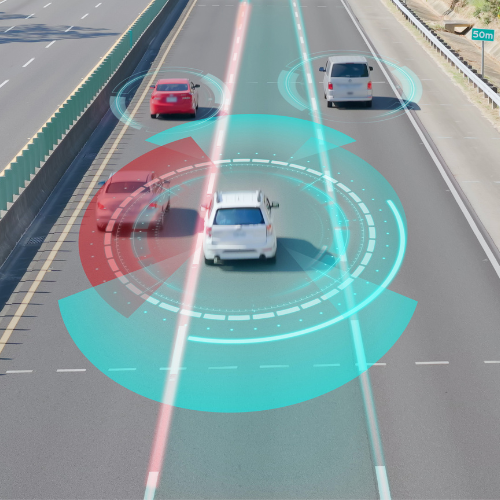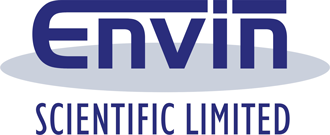
How optical filters are used in LiDAR
LiDAR is the optical equivalent of radar. Whereas radar uses radio waves, LiDAR uses laser light for detection and ranging. The technology dates back to the early 1960s and was originally called Colidar (coherent light detection and ranging).
More recently, LiDAR has found applications in consumer electronics, including range detection for autonomous vehicles, to allow the vehicle to ‘sense’ the surrounding environment and any potential obstacles.
Because LiDAR depends on the ability to both transmit and detect reflected light from a wide range of real-world surfaces, optical filters play an important role in improving the reliability of results.
Why are optical filters used in LiDAR?
LiDAR, especially when used in real-world daytime conditions, is at risk of interference due to ambient light levels.
This is particularly a problem when ambient light is very bright, or when ambient light is at a wavelength close to that used by the LiDAR laser.
In order to ensure the reliability of LiDAR measurements, optical filters can reduce glare from reflected sunlight, as well as using a narrowband filter to eliminate unwanted wavelengths from the measurement.
This maximises the signal-to-noise ratio in the detector, reducing the risk of a false positive result and allowing LiDAR to be used in a much wider variety of real-world environments.
What wavelengths are used in LiDAR?
In principle, LiDAR can use laser light at any wavelength; however, there are certain wavelengths in common usage.
These include 532nm and 1,064nm for general LiDAR applications, plus 905nm and 1,550nm for automotive applications.
Using common wavelengths allows for interoperability between LiDAR lasers, optical filters used to process the signal, and the detectors used to receive and interpret the results.
Envin Scientific can design and manufacture optical filters with specific, bespoke characteristics – so if you’re working on a custom LiDAR device or installation, we can supply the bespoke optical filters you need.
Beam splitters for LiDAR detectors
Optical filters for LiDAR detectors are not only used for narrowband signal noise reduction. Beam splitters are also routinely included in detectors, as a way to collect the return signal.
Envin Scientific’s optical filters include beam splitters for all purposes, including LiDAR. Again, if you need a beam splitter with specific characteristics, or combined with a narrowband filter, we can design a custom component for you.
All enquiries are welcome – we love working with our customers to identify specific challenges and create the bespoke optical filters required to overcome those obstacles.
Find out more
Whether you’re looking for optical filters for LiDAR wavelengths from 532nm to 1,064nm, or optical filters for automotive LiDAR from 905nm to 1,550nm, or you have a bespoke need you would like to discuss, we are waiting for your enquiry.
Our optical filters are manufactured to the tightest of tolerances and fully tested to give you complete confidence that the results you obtain will be accurate.
To find out more, contact Envin Scientific today and we will be happy to discuss your needs, and whether we have optical filters (or the capability to produce a bespoke component) that can give you reliable, high-quality LiDAR readings from your device.

